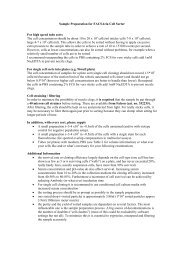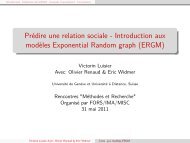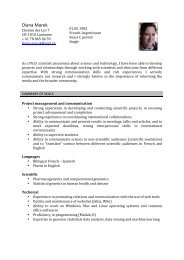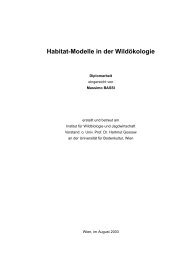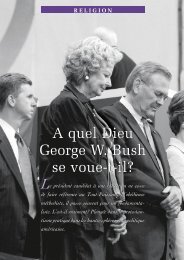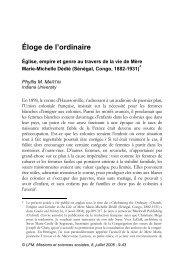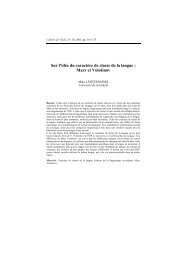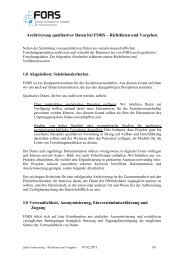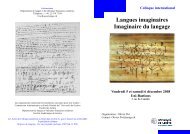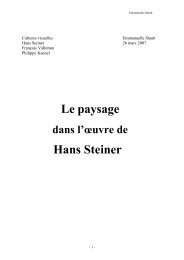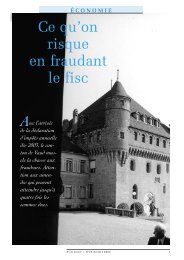conference programme book - European Survey Research ...
conference programme book - European Survey Research ...
conference programme book - European Survey Research ...
You also want an ePaper? Increase the reach of your titles
YUMPU automatically turns print PDFs into web optimized ePapers that Google loves.
180 FRIDAY 22 JULYAtude measurement in web surveys mostly relies on requiring respondents to indicate their agreement ordisagreement with each of several items under the same Likert-type scale in a grid format. As it is known thatrespondents do not only aend to the words that convey the quesons but also to the visual language of aquesonnaire (i.e., format and shape of response scales, verbal and numerical labels of scale points, spacing,posioning, and order of response opons) it is essenal to understand how this effects the response process.Although there is no conclusive evidence about the influence of the direcon of extreme point labelling (e.g.,Belson, 1966; Friedman et al., 1993; Salzberger& Koller, 2010; Weng& Cheng, 2000), applying the ”near means related” heurisc (Tourangeau et al...4.10.4 Knowing or guessing? Queson format effects on the esmated level of polical knowledgeD. Johann 1 , T. Schübel 21 Department of Methods in the Social Sciences, University of Vienna, Austria; 2 Department of Polics andPublic Administraon, University of Konstanz, GermanyMuch of the scienfic interest in polical knowledge stems from the debates over the capacity of ordinarypeople to parcipate in democrac life. Polical knowledge has become increasingly central to the study ofpublic opinion, media effects, and polical behaviour more generally (e.g. Bartels 1996; Delli Carpini/Keeter1996; Jerit et al. 2006). However, since praccal and theorecal uncertaines sll surround the measurementof polical knowledge, such conceptual and theorecal quesons will be answered only through careful empiricalstudy. We want to contribute to the methodological debate on esmang levels of polical knowledgeby examining the influence of three survey design factors: (1) guessing-discouragements (Nadeau/Niemi 1995;Mondak/Creel Davis 2001; Krosnick et al...4.11 Innovaons in survey sampling IITo be held on July 22, 2011 from: 09:00 to 10:30, in room 414.Coordinated by:• Siegfried Gabler - GESIS - Leibniz Instute for the Social Sciences, Germany• Seppo Laaksonen - University of Helsinki, Finland4.11.1 Design effect of randomized systemac samplingS. Gabler 11 GESIS - Leibniz Instute for the Social Sciences, GermanyIn stascal pracce, systemac sampling (SYS) is used in many modificaons due to its simple handling. Inaddion, SYS may provide efficiency gains if it is well adjusted to the structure of the populaon under study.However, if SYS is based on an inappropriate picture of the populaon a high decrease of efficiency, i.e. ahigh increase in variance may result by changing from simple random sampling to SYS. In the context of twostagedesigns SYS so far seems oen in use for subsampling within the primary units. As an alternave to thispracce, we propose to randomize the order of the primary units, then to select systemacally a number ofprimary units and, thereaer, to draw secondary units by simple random sampling without replacement withinthe primary units selected. This procedure is more efficient than simple random sampling with replacementfrom the whole populaon of all secondary units, i.e...4.11.2 Possibilies of Sampling Methods in case of Hidden GroupsZ. Szendrő 11 Univesity of Miskolc, HungarySince there is no adequate data of hidden groups’ distribuon it is quite hopeless to carrying out a quantavesurvey even with mulstage strafied probability sampling which involves proporonately these populaons.



